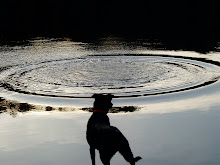
After the conference at Glen Eyrie (Colorado Springs/two weeks ago), I stayed for a couple of days of hiking. This was an exercise in faith (or perhaps foolishness), given I would be climbing with a broken toe. But Glen Eyrie is an astoundingly beautiful corner of God’s creation and no way could I not hike.
My biggest adventure was the Garden of the Gods overlook trail, deemed “difficult” by the Glen. Moderate by New Hampshire standards, the trail was only difficult because of the first lesson I—as a long-time hiker—should already know.
Lesson 1. Not all turns are marked.
By the time I followed a level trail to a lovely but non-spectacular look-out, I realized I must have missed the turn-off from the main trail. Hence:
Lesson 2—It’s no sin to back track.
In fact, back-tracking can be downright wise, even though it did not help me discover the trail turn-off (which I have since learned from other experienced GE hikers is apparently not marked or obvious).
I knew the Garden of the Gods trail left this one. I just didn’t remember exactly where it should and didn’t backtrack far enough. Which leads me to:
Lesson 3—It’s not enough to consult the map.
If I had either memorized the map or brought it with me, I would have realized the turn-off for the GG trail came very, very quickly. I had assumed it would be obvious so I just hiked on and on until it was abundantly clear I had missed it long ago.
This misunderstanding led me to climb what I hoped was the turn-off but what in reality was a very steep deer/elk trail. Because it was so steep and sandy, I had to rely on the occasional rock outcropping and the brush to keep from slipping down the hill. Which brings me to:
Lesson 4—If you’re going to reach for a branch, make sure it’s alive.
Otherwise, it’ll break off in your hand. The trick is recognizing signs of life on brush that hasn’t budded yet for the spring. I won’t go into a horticultural discussion here but the best test is a tug and then a yank. A branch without sap will be dry and break away. A branch with the lifeblood still in it will hold.
Climbing almost straight up would have been impossible four days earlier, when I was still unaccustomed to the altitude. By the time I attempted this climb, my body had churned out enough extra red blood cells to acclimate me to breathing. Which reminds me of:
Lesson 5—Good breathing takes time and practice.
On Sunday at the Glen, I couldn’t even climb stairs without huffing. By Thursday, I could hike two hours and still sing.
This little detour finally brought me to where I could see the path. However, I had to cross some grassy soil before actually getting onto the path. I was on level ground again but the trick here was that there were tiny cacti among the grass. Since I was wearing socks and sandals due to my broken foot, I had to watch every step so not to get pricked. Those needles are barbed and rotten to get out once you’re stuck. Which brings me to:
Lesson 6—It’s not cowardly to test every step if the circumstances call for it.
I was now on the right trail, one that climbed a series of steep hills. Every time I thought I had to be approaching the final hill, I’d crest it to discover another. Which is how I learned:
Lesson 7—Trudging can be a gift.
I supposed knowing when to turn back is also a gift but no way, not after following the wrong trail to its conclusion, backtracking, climbing a steep deer trail, and braving a field of cacti-laced grass. No way. So I trudged and trudged. Though the air was 45 degrees and the wind harsh, I was soaked with sweat.
So I trudged on and on until finally I crested the last hill and beheld what I couldn’t from any of the lower hills. The photo of the snow-covered Rockies and Pike’s Peak cannot do the reality justice.
I sat down on the bench and beheld the glory of what God has given us. And quickly learned:
Lesson 8—Don’t be deceived by circumstances.
I rapidly cooled and, with high winds, had to pull on my ski hat, jacket, etc. even as the sweat still clung to my skin. I had to tilt away from the sun because, though circumstances felt like winter, the truth was it was May and high altitude—a prescription for a terrible sunburn.
I hated to go down but—in this side of heaven—one can only drink in so much beauty. So I started down the nice, clear path and remembered something I know from mountain climbing in New Hampshire.
Lesson 9—It’s oftentimes harder to go down than up.
Going up, your weight leans into the slope and your momentum opposes gravity. Coming down, your momentum, weight, and gravity conspire. Not a bad thing if we’re talking stairs or a road but when it’s a path with very loose sand, coming down can be downright treacherous. Which reminded me of something I should have known:
Lesson 10—Use a walking stick.
Next year I’ll be sure to pack mine.
I arrived at the dining hall, my legs like deadwood.
Four hours later, I went out for another hike. Better prepared, though still with lessons to be learned.
It wasn’t lost on me then, and still isn’t that each one of these lessons is a tremendous spiritual analogy.
I report. You decide.










